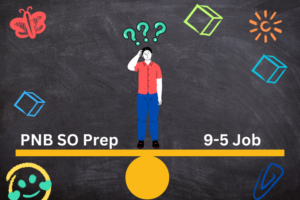Five projects P, Q, R, S and T will be completed, only one project in one month, from January to June of the same year. Projects P will be completed immediately before T and project Q will be completed before S. Project Q and S will not be completed on the first month of the year. There will be a month in which no project is completed which is denoted by L. There will be a gap of two months between the months on which project S and Q will be completed. Project R will be completed immediately before the month in which no project is completed. The month in which no project is completed will not be the second and the fourth month of the year.
Q1. On which of the following month Project R will be completed?
(a) February
(b) April
(c) May
(d) can’t be determined
(e) None of these
Q2. How many months’ gap will be there between the months in which Project T and Q will be completed?
(a) None
(b) One
(c) Two
(d) Three
(e) None of these
Q3. Which of the following project will be completed on January?
(a) R
(b) Q
(c) P
(d) T
(e) None of these
Q4. On which month will Projected S be completed?
(a) January
(b) April
(c) May
(d) June
(e) None of these
Q5. Which of the following statements is/are true?
(a) There is two months’ gap between the months in which project T and S will be completed.
(b) Project Q will be completed immediately after the month in which no project is completed.
(c) The month in which no project is completed is exactly between the months in which project S and R will be completed.
(d) All are true
(e) None of these
Q6. Among L, M, N, S and F each having a different height, F is taller than N and S and shorter than L and M. Who among them is the tallest?
(a) L
(b) M
(c) L or M
(d) N
(e) None of these
Q7. How many such pairs of letters are there in the word HERITAGE each of which has as many letters between them in the word as in the English alphabet?
(a) None
(b) One
(c) Two
(d) Three
(e) More than three
Q8. How many such digits are there in the number 523146 each of which remain in its original position when all the digits are arranged in ascending order within the number from left to right?
(a) None
(b) One
(c) Two
(d) Three
(e) More than three
Q9. In a certain code ANSWER is written as TOBSFX. How is STREAM written in that code?
(a) QSRNBF
(b) SUTNBF
(c) SUTFBN
(d) TUSNBF
(e) None of these
Q10. If the positions of the letters in the word ORGANISE are rearranged in such a way that the position of the first and the second letter are interchanged, similarly the position of the third and the fourth letters are interchanged and so on, from the left end then which of the following will be the third from the right end after the rearrangement?
(a) N
(b) O
(c) R
(d) A
(e) None of these
Directions (11–15): The following questions are based on the five three – digit numbers given below:
684 512 437 385 296
Q11. If 2 is added to the first digit of each of the number then how many numbers thus formed will be divisible by three?
(a) None
(b) One
(c) Two
(d) Three
(e) None of these
Q12. If all the digits in each of the numbers are arranged in descending order within the number, which of the following will be the highest number in the new arrangement of numbers?
(a) 684
(b) 385
(c) 296
(d) 437
(e) None of these
Q13. What will be the resultant number if the second digit of the second lowest number is divided by the third digit of the highest number?
(a) 2
(b) 3
(c) 0
(d) 1
(e) 4
Q14. If 1 is added to the first digit and 2 is added to the last digit of each of the numbers then which of the following number will be the second highest number?
(a) 385
(b) 684
(c) 437
(d) 296
(e) 512
Q15. If in each number the first and the second digits are interchanged then which will be the highest number?
(a) 296
(b) 512
(c) 437
(d) 684
(e) 385






 GA Capsule for SBI Clerk Mains 2025, Dow...
GA Capsule for SBI Clerk Mains 2025, Dow...
 The Hindu Review October 2022: Download ...
The Hindu Review October 2022: Download ...
 How to Manage Time for PNB SO Preparatio...
How to Manage Time for PNB SO Preparatio...





